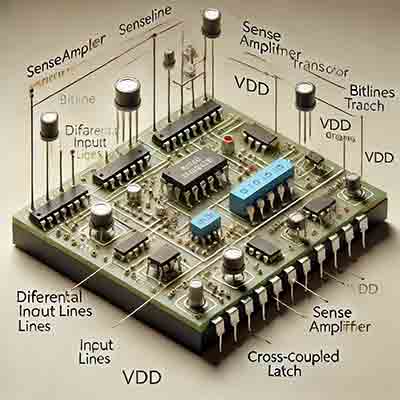Electromechanical Coupling Coefficient Of Quartz Wafers
A Ph.D student from a BioNEMS research group requested a quote for the following.
I am writing regarding to the "Quartz SAW wafer". Our research are mainly focused on the SAW-based microfluidics, in which the lithium niobate SAW substrates (Y-cut 128) are largely used as an actuator to generate acoustic force to manipulate microparticles/cells.
We are currently trying to use quartz as an alternative to lithium niobate (Y-cut 128). I know that the electromechanical coupling coefficient of quartz is much smaller than that of lithium niobate, which suggests that the generated acoustic force will not be as large as we want. But I am still wondering if you can recommend us one quartz SAW wafer which characteristics are relatively closed to the lithium niobate (Y-cut 128) among all your quartz SAW wafers. And also, if there is one quartz meeting our requirement well, could you please give us a price quotation for the 4'' one. Thank you.
Reference #153701 for specs and pricing.
Get Your Quote FAST! Or, Buy Online and Start Researching Today!
What Is LiNbO3 Electromechanical Coupling
LiNbO₃ (Lithium Niobate) Electromechanical Coupling:
Electromechanical coupling in LiNbO₃ (Lithium Niobate) refers to the material’s ability to convert  electrical energy into mechanical (acoustic) energy and vice versa. This property is fundamental to its use in acoustic wave devices like surface acoustic wave (SAW) filters, bulk acoustic wave (BAW) devices, and other piezoelectric applications.
electrical energy into mechanical (acoustic) energy and vice versa. This property is fundamental to its use in acoustic wave devices like surface acoustic wave (SAW) filters, bulk acoustic wave (BAW) devices, and other piezoelectric applications.
Key Points:
- Piezoelectric Nature: LiNbO₃ is a strongly piezoelectric material, meaning it generates mechanical deformation when an electric field is applied, and conversely, generates an electric charge when subjected to mechanical stress.
- Coupling Coefficient (k²): The electromechanical coupling coefficient (denoted as k²) is a measure of efficiency in this energy conversion process.
- It quantifies the fraction of electrical energy converted to mechanical (acoustic) energy during transduction.
- A higher k² indicates more efficient coupling between electrical and mechanical domains.
- Typical Values for LiNbO₃: Depending on the crystal orientation and propagation direction, k² for SAW devices on LiNbO₃ can be relatively high compared to other materials.
- Common values for SAW on Y-cut LiNbO₃ can be in the range of 0.05 to 0.20 (5% to 20%), which is considered quite high for SAW devices.
- Some orientations like 128° Y-cut LiNbO₃ are particularly popular for high coupling applications.
Significance in Devices:
- SAW Devices: Higher k² allows for wider bandwidth and lower insertion loss in RF filters.
- BAW Devices: In bulk acoustic wave applications, the coupling coefficient is also critical for efficiency and performance.
- Optoelectronics: In integrated optics, the piezoelectric and electro-optic properties of LiNbO₃ are exploited for modulators and other photonic devices.
Factors Affecting Coupling in LiNbO₃:
- Crystal Orientation: Different cuts and propagation directions significantly alter the piezoelectric response and coupling coefficient.
- Propagation Mode: Surface acoustic waves (Rayleigh, Sezawa, shear horizontal) and bulk acoustic waves exhibit different coupling characteristics.
- Temperature Stability: LiNbO₃ has good piezoelectric properties but moderate temperature stability compared to other materials like quartz.
Would you like to know more about specific orientations or applications using LiNbO₃?

 electrical energy into mechanical (acoustic) energy and vice versa. This property is fundamental to its use in acoustic wave devices like surface acoustic wave (
electrical energy into mechanical (acoustic) energy and vice versa. This property is fundamental to its use in acoustic wave devices like surface acoustic wave (